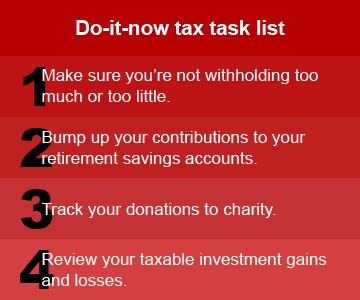The figures displayed in the graph above show the amount of federal taxes paid by the average household in each income quintile minus the average amount of government transfers received by those households in 2011.
For each of the three lower income quintiles, their average government transfer payments exceeded their federal taxes paid by $8,600, $12,500, and $9,100 respectively, and therefore the entire bottom 60% of US households are “net recipients” of government transfer payments.
Averaged across all three lower income quintiles, we could say that the lowest 60% of American households by income received an average transfer payment of about $10,000 in 2011.
And because the government has no money of its own, where did those transfer payments come from to finance the “net recipient” households? Where else, but from the top two income quintiles, and realistically almost exclusively from Americans in the highest quintile.
Specifically, the average household in the fourth quintile paid slightly more in federal taxes ($14,800) than it received in transfer payments ($14,100) in 2011, making the average household in the second-highest income quintile a “net payer” household in the amount of $700 in 2011.
Basically, households in the fourth income quintile paid enough in taxes to cover their transfer payments, and then made a minor contribution of $700 on average to help cover the transfer payments of the “net recipient” households in the bottom 60% and make a small contribution to the federal government’s other expenditures.
But the major finding of the CBO report is that the households in the top income quintile are the real “net payers” of the US economy.
The average household in the top one-fifth of American households by income paid $57,500 in federal taxes in 2011, received $11,000 in government transfers, and therefore made a net positive contribution of $46,500.
The 2nd-highest income quintile basically just barely covers its transfer payments, so it’s really the top 20% of “net payer” households that are financing transfer payments to the entire bottom 60% AND financing the non-financed operations of the entire federal government.
Here’s another way to think about the burden of the “net payer” top income quintile. The average household in that income quintile made a contribution net of transfers in 2011 in the amount of $46,500.
That would be equivalent to the average household in the top 20% (quintile) writing four checks:
1) one check in the amount of $8,600 that would cover the average net transfer payments of a household in the bottom quintile,
2) another check for $12,500 to cover the average net transfers of a household in the second lowest quintile,
3) a third check in the amount of $9,100 to cover the average net transfer payments to a household in the middle income quintile, and
4) then finally writing a check for the balance of $16,300 that would go directly to the federal government, which for the households in the quintile as a whole would have covered almost 100% of the non-financed federal government spending in 2011.
So except for a small contribution net of transfers in the amount of $700 from the average household in the fourth quintile, the highest income quintile is basically financing the entire system of transfer payments to the bottom 60% AND the entire operation of the federal government.
And yet don’t we hear all the time that “The Rich” AREN’T paying their fair share of taxes and that they need to shoulder a greater share of the federal tax burden?
Hey, the Top 20% are already shouldering almost the entire federal tax burden along with almost the entire system of entitlements and transfer payments!
BUT that’s not “Fair” enough already?
Isn't abundantly evident that the bottom 80% aren't paying anywhere near their "Fair Share?"







